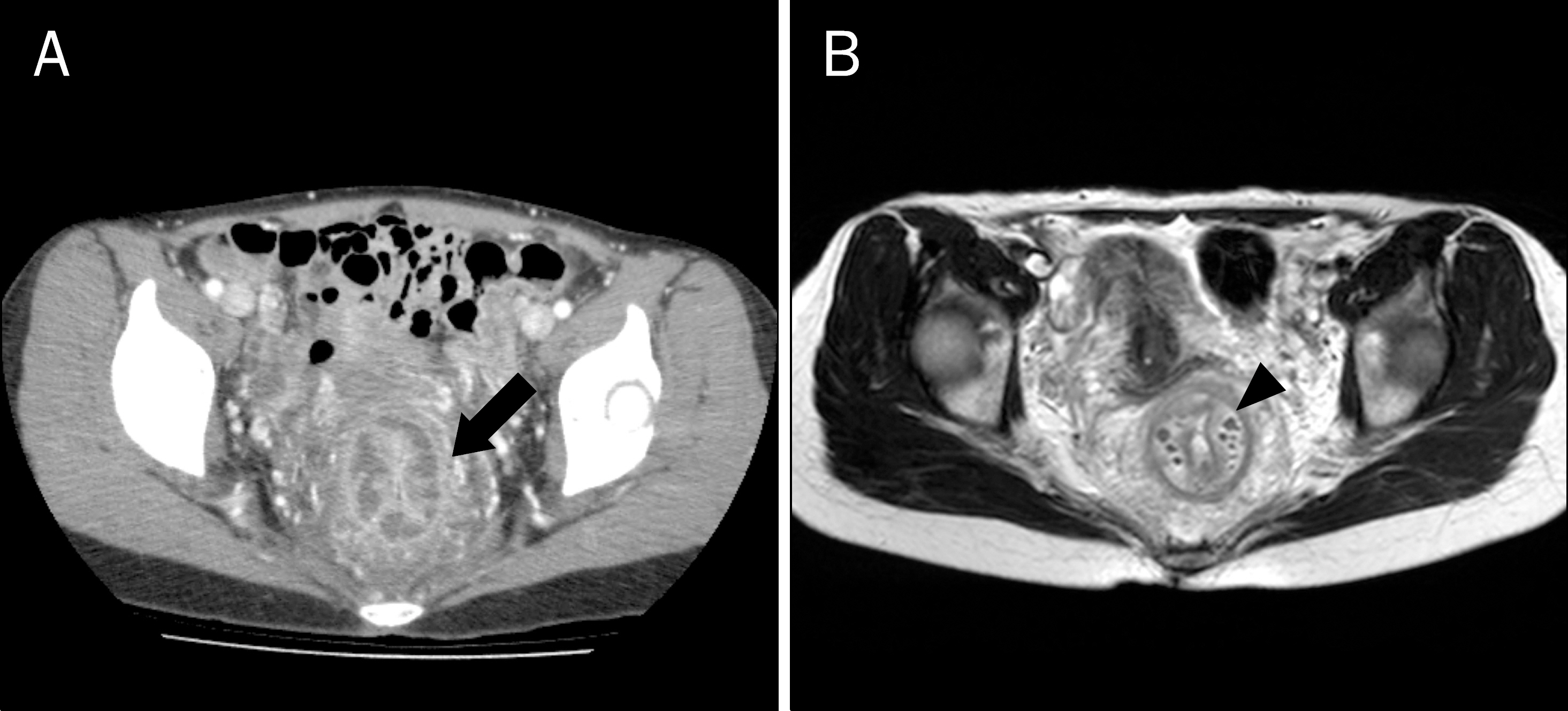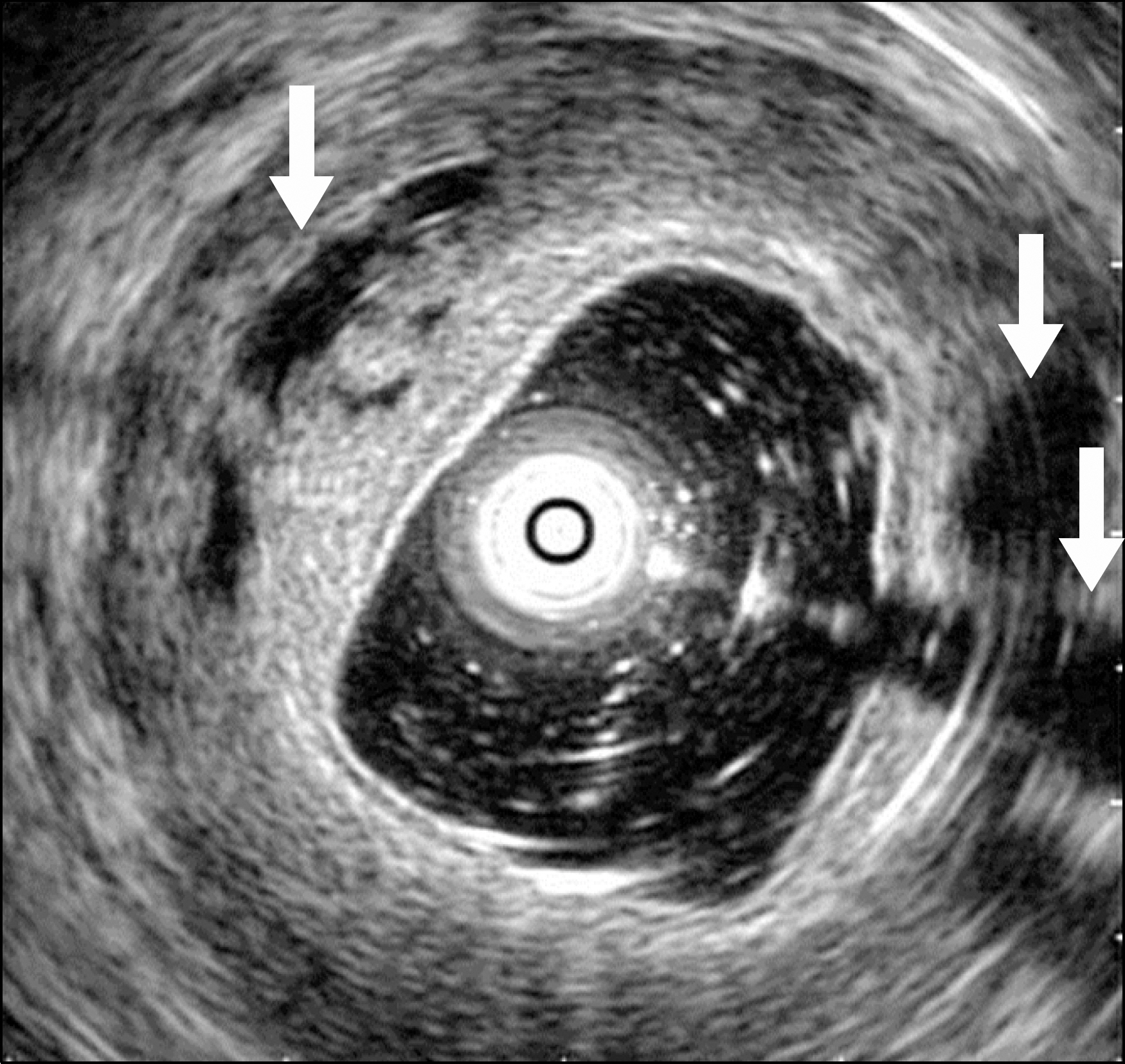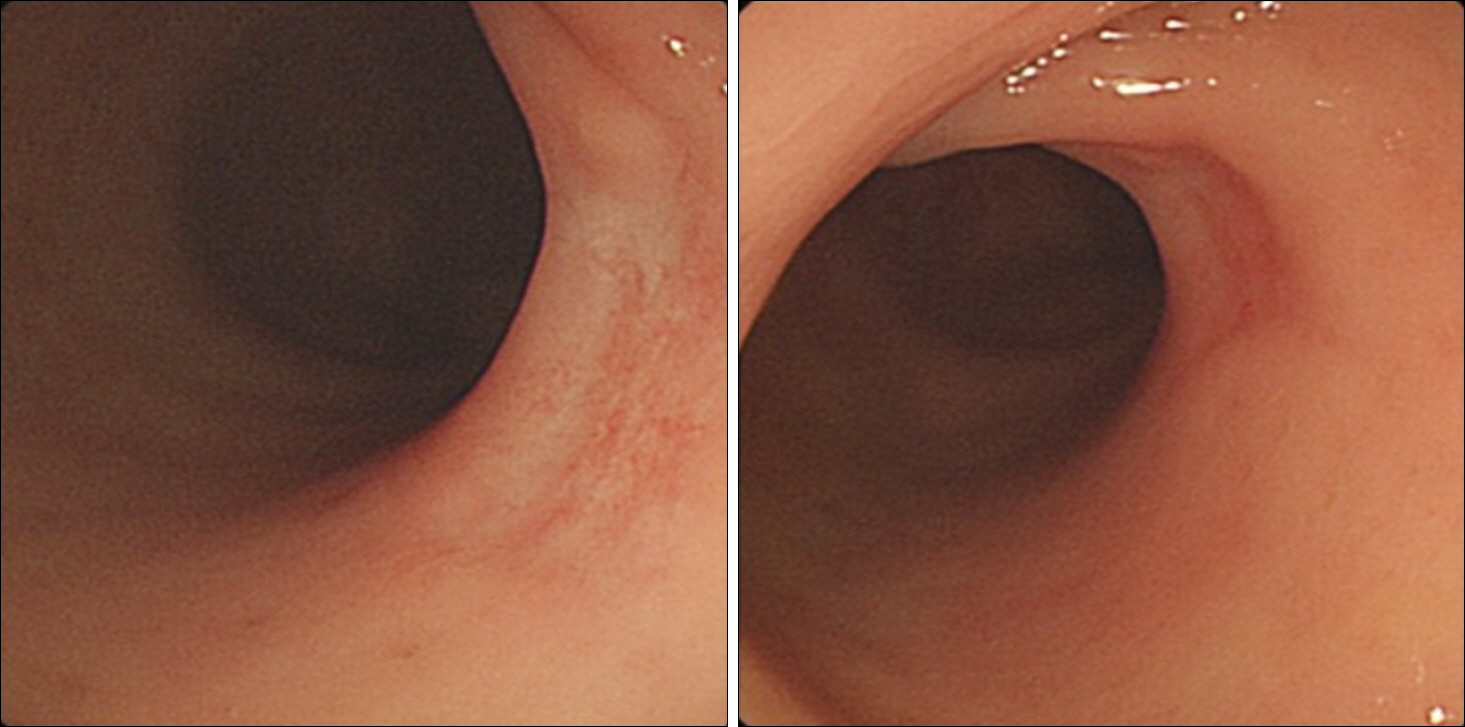Korean J Gastroenterol.
2016 Apr;67(4):212-215. 10.4166/kjg.2016.67.4.212.
An Unusual Case of Proctitis and Rectal Abscess due to Irritants by Artemisia asiatica Smoke (Ssukjwahun)
- Affiliations
-
- 1Department of Internal Medicine, Inje University College of Medicine, Seoul, Korea. yousunk69@korea.com
- KMID: 2373427
- DOI: http://doi.org/10.4166/kjg.2016.67.4.212
Abstract
- Proctitis is an inflammatory change of rectal mucosa induced by various agents or stimulus. Among many etiologies, it may be caused by medical treatments such as radiation or antibiotics. Proctitis usually presents with rectal ulcer but abscess formation is uncommon. Therapy using Ssukjwahun exerts its effect by directly applying the smoke around genital area and anus with various medicinal brewed herbs, especially worm-wood. Secondary metabolite of this plant, monoterpene, is known to facilitate circulation, exert anti-inflammatory effect, and help control pain. Herein, we report an unusual case of infectious proctitis presenting with rectal ulcer and abscess formation after perianal application of warm steam made by Artemisia asiatica smoke for treatment of dysmenorrhea.
Keyword
MeSH Terms
Figure
Reference
-
References
1. Doh YS, Kim YS, Jung HJ, et al. Longterm clinical outcome of clostridium difficile infection in hospitalized patients: a single center study. Intest Res. 2014; 12:299–305.2. Jeong WS, Choi SY, Jeong EH, et al. Perianal abscess and proctitis by Klebsiella pneumoniae. Intest Res. 2015; 13:85–89.3. Lim CH, Lee HY, Kim WC, et al. A case of chemical colitis caused by hydrogen peroxide enema. Korean J Gastroenterol. 2011; 58:100–102.
Article4. Lee KO, Kim S, Chang SB, Yoo JS. Effects of Artemisia A. Smoke (Ssukjwahun) on menstrual distress, dysmenorrhea, and prostaglandin F2alpha. Korean J Women Health Nurs. 2009; 15:150–159.5. Lee KO, Chang SB, Kim S. Content analysis of wormwood smoke (Ssukjwahun) experiences in women. J East West Nurs Res. 2008; 14:68–77.6. Yoon WJ, Kim JW, Park JK, et al. Colon injury caused by coffee enema. Korean J Gastrointest Endosc. 2005; 31:171–174.7. Choi JW, Jo YJ, Kim SC, et al. A case of coffee enema-induced colitis. Korean J Gastrointest Endosc. 2005; 31:427–431.8. Shin HH, Yoo YK, Park CG, Bang IS, Chang R, Min YI. A case of enema – induced colitis. Korean J Gastrointest Endosc. 1984; 4:69–72.9. Pike BF, Phillippi PJ, Lawson EH Jr. Soap colitis. N Engl J Med. 1971; 285:217–218.
Article10. Lee SC, Yoo JG, Park HS, et al. A case of hydrogen peroxide enema induced chemical colitis. J Korean Soc Coloproctol. 1998; 14:317–322.11. Cho SK, Kim YK, Lee YR, et al. A case of hydrogen peroxide induced colitis. Korean J Gastrointest Endosc. 1999; 19:659–666.12. Chae HS, Kim SS, Lee KM, et al. An outbreak of glutaraldehyde colitis. Korean J Gastrointest Endosc. 2002; 24:273–277.13. Chae MS, Kim JH, Park SH, et al. Study on satisfaction and features of patient groups treated with Korean medicine steam therapy (KMST) at Korean medicine hospital. J Korean Obstet Gynecol. 2014; 27:28–40.
- Full Text Links
- Actions
-
Cited
- CITED
-
- Close
- Share
- Similar articles
-
- A Case of Proctitis Cystica Profunda Diagnosed by Endoscopic Mucosal Resection
- Bisacodyl Induced Severe Rectal Ulcer with Proctitis
- Lymphoid follicular proctitis resembling rectal carcinoid tumor, confirmed by endoscopic resection
- What is In-Jin-Sook? Artemisia capillaris, Artemisia iwayomogi, and Artemisia annua
- Solitary rectal ulcer syndrome





